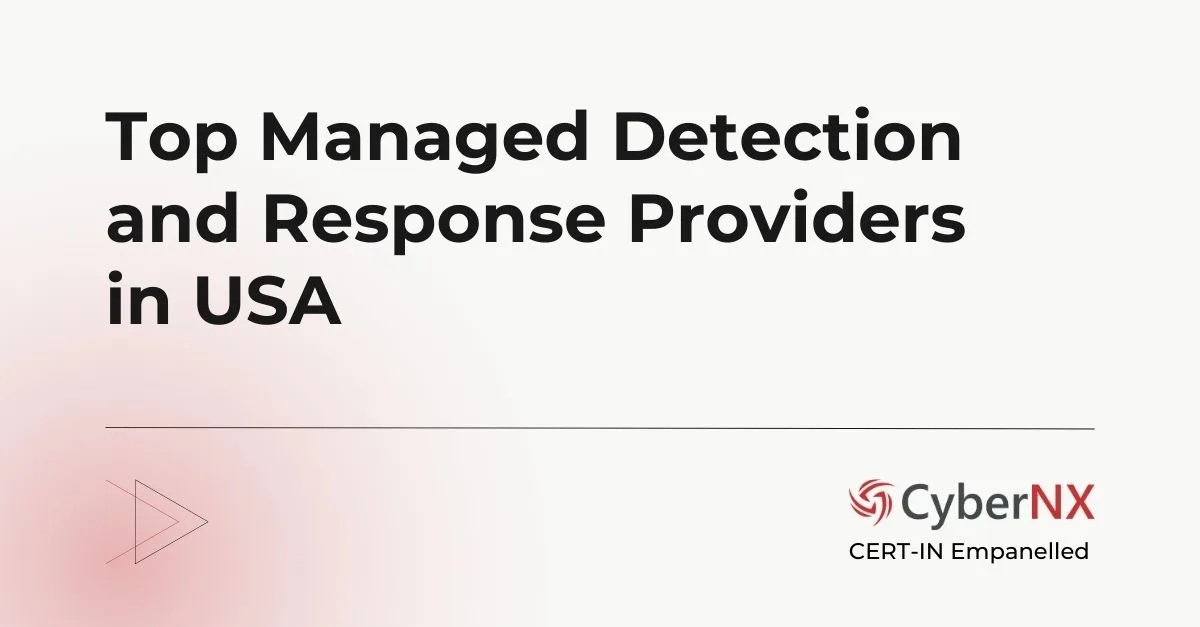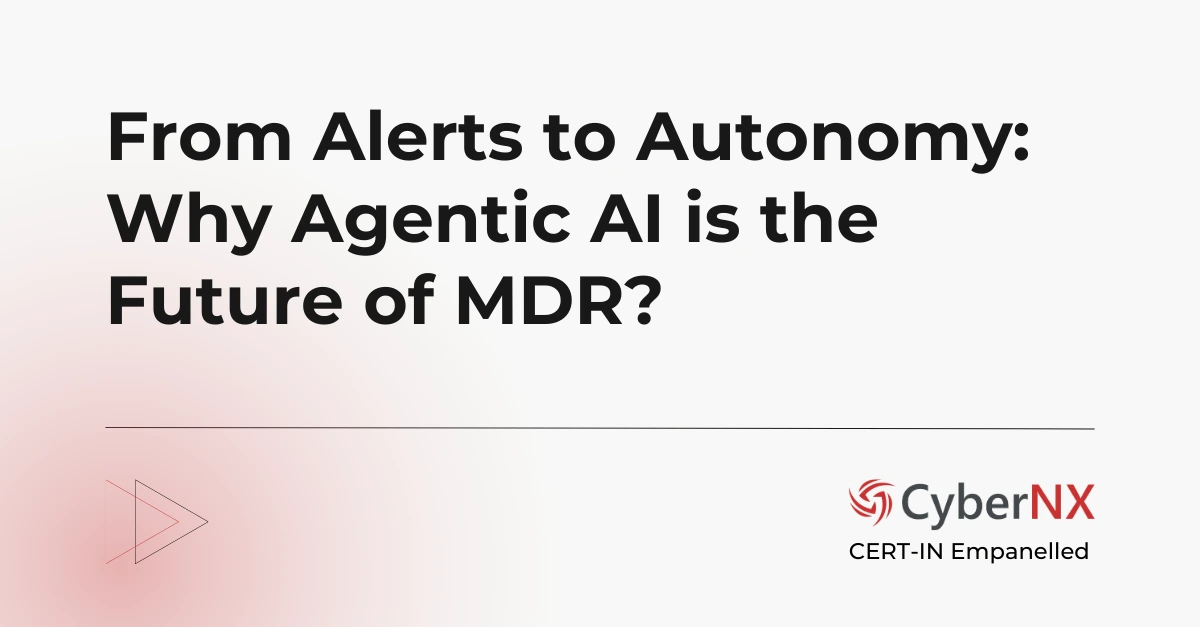Cyber threats today are evolving and multiplying at a breakneck pace. Gone are the days when reactive security and automated alerts were enough to keep your business safe. The modern threat landscape demands equally sophisticated and advanced security solutions. That’s where Managed Detection and Response services fit in perfectly. MDR Threat Hunting services like the one offered by CyberNX Peregrine MDR makes all the difference.
The Problem with Waiting for Alerts
Most organizations rely on SIEMs, firewalls, and EDR tools to protect their networks. These are necessary, but not sufficient. Why? Because attackers have become adept at bypassing perimeter defences and lying low inside networks – sometimes for months – before launching an attack.
Think of it like this: You wouldn’t rely solely on your home alarm system to stop a burglar who’s already inside. You’d want someone searching room by room, flashlight in hand, checking for signs of a break-in. That’s what MDR threat hunting does in the digital world.
What is MDR Threat Hunting, really?
First, let’s discuss about threat hunting. It is a proactive security approach. Instead of waiting for an alert, your cybersecurity team actively searches for signs of compromise – even if no alerts have been triggered. It’s about asking, “What if we’re already breached and don’t know it?”
MDR Threat Hunting services like Peregrine MDR combine machine learning, human analysis, and threat intelligence to dig into system logs, endpoint behaviour, and user activity to uncover hidden threats.
15 Real-World Indicators of Compromise You Shouldn’t Ignore
We’ve seen countless breaches that could have been prevented with timely detection of subtle warning signs. Based on expert research and proven field intelligence, here are 15 red flags that your network may already be compromised:
- Unusual outbound network traffic
- Privileged user account anomalies
- Geographical login irregularities
- Suspicious login attempts (especially after hours)
- Database read volume spikes
- Oversized HTML responses (common with SQL injections)
- Repeated requests for the same file
- Traffic on mismatched ports
- Registry or system file changes
- DNS request anomalies
- Unexplained system patches
- Mobile device profile changes
- Data bundles in unexpected locations
- Automated or “unhuman” web traffic
- DDoS smokescreens masking deeper breaches
As part of CyberNX’s Peregrine MDR services, our threat hunters are trained to catch these indicators early—before damage is done.
MDR Threat Hunting: Real-Life Use Cases
Our MDR threat hunting platform uses real-world scenarios to proactively scan and flag suspicious behaviour. Here are a few use cases we routinely monitor for:
- Command Shell Launches of reg.exe – often a sign of persistence techniques.
- Simultaneous logins across multiple hosts – indicates lateral movement.
- Quick execution of a series of suspicious commands – commonly seen in post-exploitation.
- Processes spawning cmd.exe or PowerShell from non-standard parents like Adobe Reader or Outlook – suggests malware execution.
- Event log clearing or stopping defensive services – classic signs of evasion.
These aren’t theory – they’re patterns we’ve seen repeatedly across breached environments. And we hunt for them before a headline-making incident occurs.
How Peregrine integrates Threat Hunting in MDR Services
There are many MDR threat hunting service providers out there, but Peregrine MDR is different. We don’t just wait for alerts – we go looking for trouble. Here’s how we help you stay ahead of attackers:
- Always-on Threat Hunting – 24X7 human-led investigations.
- Context-Rich Detections – Not just alerts, but stories and context behind them.
- Custom Use Case Development – Built around your business, not just templates.
- MITRE ATT&CK Alignment – We use the world’s leading threat framework to map adversary behaviour
- Fast Response Time – Reduce dwell time and take action faster.
Whether it’s insider threats, lateral movement, zero-days, or privilege escalation – we’ve got eyes on it.
Conclusion
MDR Threat Hunting, as you can see, is a necessity for fighting modern threats. Relying on traditional security measures could is limiting your capability to spot stealthy, sophisticated threats that quietly infiltrate networks and cause massive damage before anyone notices.
By proactively searching for early signs of compromise, services like CyberNX’s Peregrine MDR empower businesses to detect and neutralize threats long before they escalate. Contact our experts to learn more about our MDR services.
MDR Threat Hunting FAQs
How is MDR threat hunting different from traditional threat detection tools like antivirus or SIEM?
Traditional tools like antivirus or SIEM rely heavily on predefined signatures and rules to detect known threats. In contrast, MDR threat hunting goes beyond signature-based detection by leveraging behavioural analytics, threat intelligence, and expert human investigation to uncover stealthy, unknown, or advanced threats that bypass traditional defences.
Do MDR threat hunting services require access to all systems and endpoints in my organization?
Yes, for effective threat hunting, MDR providers typically require visibility across a wide range of systems – endpoints, servers, cloud environments, and network traffic. Comprehensive access ensures they can correlate anomalies across data points and identify threats that would otherwise remain hidden in isolated systems.
Can MDR threat hunting help with compliance requirements like ISO 27001 or PCI-DSS?
Absolutely. While MDR threat hunting is not a direct compliance checkbox, it significantly strengthens your security posture by enabling continuous monitoring and faster incident detection – key components in most cybersecurity frameworks. It also provides detailed audit trails and reporting that support compliance documentation and audits.
What’s the ROI of investing in MDR threat hunting services?
The ROI lies in risk reduction, faster threat containment, minimized breach impact, and protection from costly downtime or reputational damage. Organizations using MDR services often experience reduced dwell time, lower incident response costs, and greater operational continuity – making it a cost-effective layer of modern cyber defence.





